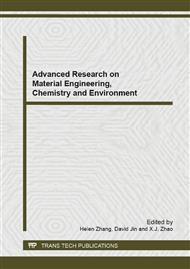p.246
p.253
p.258
p.263
p.268
p.275
p.279
p.283
p.288
Membrane Fouling Mechanism and its Control in the Treatment of Brackish Water with Reverse Osmosis Process
Abstract:
Brackish water was treated with reverse osmosis process. The fouling mechanism of RO and its control method was studied. In the treatment of brackish water, the salt removal efficiency was above 95% and the effluent quality was up to the standard for drinking water quality (GB5749-2006). The SDI of the influent of RO was less than 5 after the raw water was pretreated by the combination of coagulation and sedimentation process and filtration process, which met the demand of the water quality of the RO influent. If ultrafiltration was added, the water quality of the pre-treatment was better. Coagulation and precipitation was not very effective for the removal of dissolved organic compounds, especially for the removal of organic compounds with molecular amount ranging from 1000 to 10000. The formation of RO membrane fouling can be divided into five stages, which is membrane surface coarseness stage by inorganic substrate, organic compounds adsorption stage, organism adhesion stage, microbial film development stage, and irreversible membrane block stage. The membrane fouling was effectively alleviated by the strategy of first alkali solution cleaning and then acid solution cleaning.
Info:
Periodical:
Pages:
268-274
Citation:
Online since:
September 2013
Authors:
Price:
Сopyright:
© 2013 Trans Tech Publications Ltd. All Rights Reserved
Share:
Citation:



